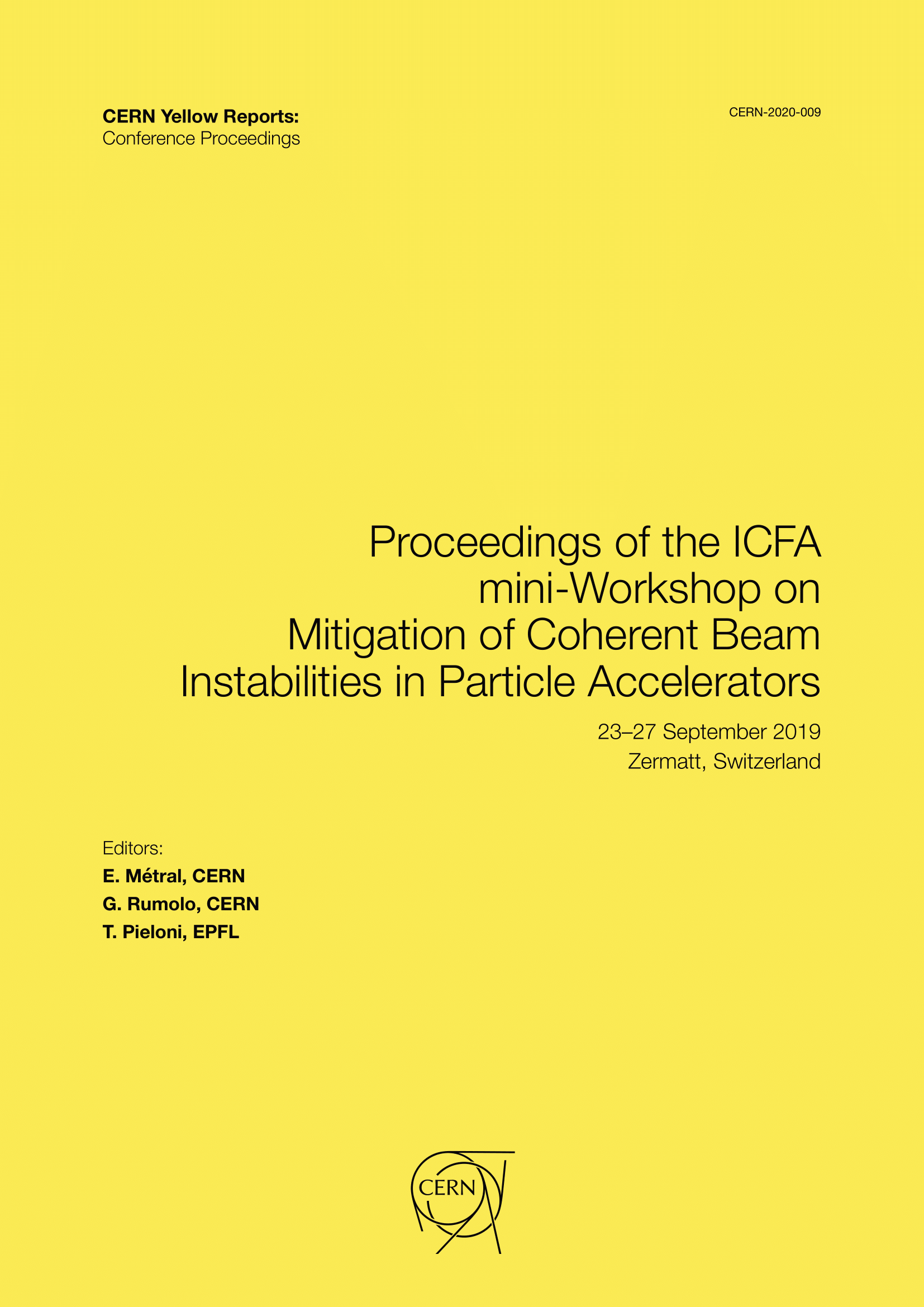RF scheme to mitigate longitudinal instabilities in the SPPC
DOI:
https://doi.org/10.23732/CYRCP-2020-009.107Abstract
A large collider project CEPC-SPPC is under study with a global effort and a leading role from IHEP, with CEPC (Circular Electron-Positron Collider, Phase I) to probe Higgs physics and SPPC (Super Proton-Proton Collider, Phase II) to explore new physics beyond the Standard Model. The key design goal for SPPC is to reach 75 TeV in center-of-mass energy with a circumference of 100 km. As an important part of the SPPC conceptual study, the study on the longitudinal dynamics at SPPC has been conducted, with a focus on the RF scheme to meet the requirements for luminosity and mitigate the relevant instabilities. The longitudinal instability bottleneck associated with the longitudinal dynamics is the loss of Landau damping. To mitigate the beam instabilities, a higher harmonic RF system (800 MHz) together with the basic RF system (400 MHz) to form a dual-harmonic RF system is found helpful, which also increases the luminosity by producing shorter bunches. The preliminary results indicate that longitudinal impedance threshold can be increased.
Downloads
Published
Issue
Section
License
Copyright (c) 2021 CERN

This work is licensed under a Creative Commons Attribution 4.0 International License.
Authors who publish with this publication agree to the following terms:
- CERN retains copyright and publishes the work licensed under the Creative Commons Attribution License 4.0 that allows others to share the work with an acknowledgement of the work's authorship and initial publication in this series.
- Authors are able to enter into separate, additional contractual arrangements for distribution of the published version of the work (e.g., post it to an institutional repository or publish it in a book), with an acknowledgement of its initial publication in this series.
- Authors are permitted and encouraged to post their work online (e.g., in institutional repositories or on their website) prior to and during the submission process, as it can lead to productive exchanges, as well as earlier and greater citation of published work (See The Effect of Open Access).

